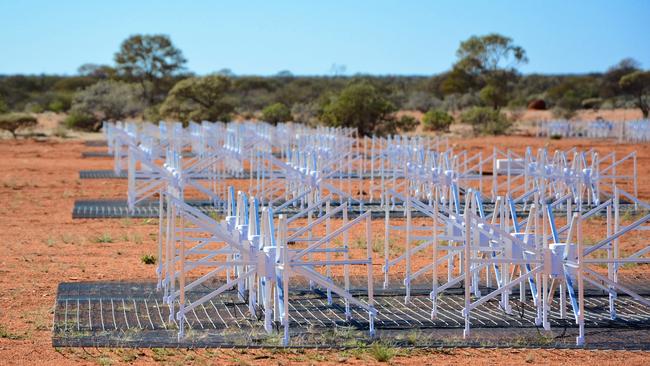Underwater deep space telescope beneath Mediterranean Sea has Australian connection
A telescope at the bottom of the Mediterranean Sea will help scientists look through the Earth to Australia to study some of the most powerful but elusive events in the universe.

VIC News
Don't miss out on the headlines from VIC News. Followed categories will be added to My News.
A giant underwater telescope will be placed at the bottom of the Mediterranean Sea with the help of Australians scientists to investigate some of the most powerful but elusive events in the universe — the interaction of neutrinos.
Produced by the Sun, each second 1000 billion neutrinos pass through every person and thing but until now have been difficult to detect.
Located at two sites at depths of up to 3500m, the KM3NeT telescope will occupy more than a cubic kilometre of water and feature hundreds of vertical detection lines anchored to the seabed, held in place by buoys.

Curtin University researcher Dr Clancy James, a member of the international project team, said the highly sensitive telescope needed to be surrounded by a vast water body to analyse subatomic neutrinos passing through the Earth, approximately at Australia’s location and exiting the opposite side of the planet in the Mediterranean.
Neutrino particles are one of the most abundant particles in the universe but, with no electrical charge and a mass close to zero, they are one of the least understood ingredients in all matter.
“Neutrinos very rarely interact, however when a neutrino hits water it generates light, which the KM3NeT telescope is able to detect,” Dr James said.
“The underwater telescope is bombarded by millions of different particles but only neutrinos can pass through the Earth to reach the detector from below so, unlike normal telescopes, it looks down through the Earth at the same sky viewed by upward-facing telescopes in Australia.”
Dr James said KM3NeT needed to be sensitive because the light detected from neutrino interactions was about as faint as a light bulb in Sydney seen from Perth.
“This project will help us answer some of the major questions around particle physics and the nature of our universe, potentially ushering in a new era in neutrino astronomy.”
Curtin University will use radio telescopes, including the Murchison Widefield Array in Western Australia, to study the origins of neutrinos seen by KM3NeT.


